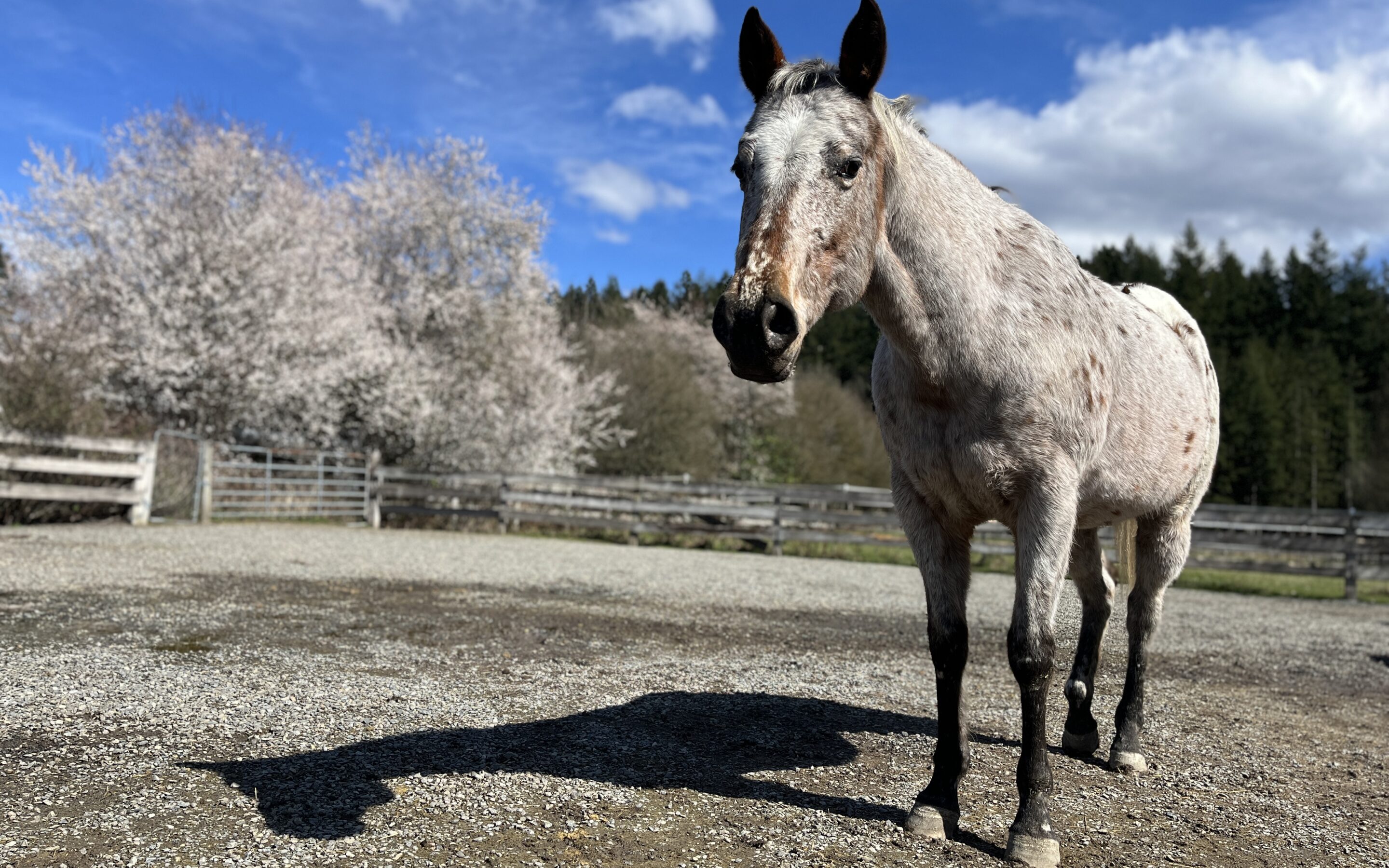Out of the horses who came from the Graham seizure, the ones we started under saddle all seemed to have some kind of soundness issue. Never have we done more lameness exams in such a short period of time.
For some, it was just about being thin soled, and applying shoes fixed the issue. For others, there was a bit more going on under the hoof. But with the help of our vets and our farriers, we got them all to a manageable, comfortable place.
It seemed that Zelly had avoided the curse of the Graham horses. She was going well under saddle, dealing with working through some things, sure, but soundness did not seem to be an issue for her.
Until, of course, it was.
She came up lame on her left front one afternoon. At first we thought it might have been the time of the year – when the weather transitions from wet to dry, hoof problems tend to emerge – or a stone bruise, or an abscess situation. But it quickly became clear that it was something needing a bit more investigation. So we called on our vets and scheduled Zelly for a lameness exam. In the meantime, we got the clear to begin Zelly on Equioxx, which did seem to moderately improve her comfort.
For Zelly, the below video shows the steps that Dr Lewis took in diagnosing Zelly’s lameness. It typically starts the same with trotting the horse out on circles on hard ground, and that can sometimes be enough. For Zelly, Dr Lewis also wanted to see her move on softer, arena footing, and then did some flexion tests on the straightaway.
After these tests, it was determined that Zelly’s left side is the worse of the two, both front and hind — she was most sore on the left upper limbs, and mildly on the left lower limbs, with everything that was done on the right making her worse on the left hind. Her soles are pretty flat, but she was negative for hoof testers, and no digital pulses were felt. Her hocks are both quite straight, and she was positive on both hocks during flexion tests. She has a palpable bone spur on her left hock as well.
Something I’ve learned in the course of all these recent evaluations, sometimes the answer is quite straightforward, and sometimes quite a few additional diagnostics are needed. And sometimes, there are ways to dial down deeper into the issue, but it will not make a difference in the decision we make for the horse in the end. To continue as a riding horse, Zelly would either require extensive blocking to identify the source of the issue more specifically, or hock injections which might or might not fully work to solve her issue. Even though she gives us the impression of having a lot of life left in her, she is still a mare of 20, and we made the decision to retire her from riding and make her a companion horse so she could live out the remainder of her years as comfortable and with as little maintenance as possible.
Just because we made the decision to retire her from riding does not mean that Zelly doesn’t have many lovely years ahead. She is pasture sound, and will make a wonderful companion for some lucky person. Zelly is tremendously gentle on the ground and is a volunteer favorite because of how sweet she is to be around and to handle. These days, she is turned out with her good friend Henry who she knew from her previous life, and the two are thick as thieves! We are certainly very excited for Zelly’s bright future, even if it wasn’t as we had originally envisioned it.


